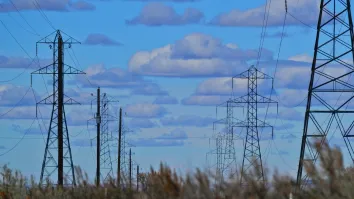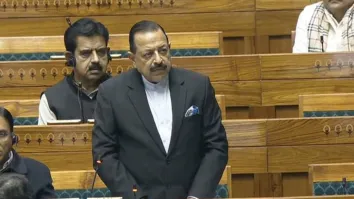India bolsters renewable grid with energy storage systems
ESS will drive investment in India's expanding renewable grid.
India is advancing its energy storage systems (ESS) to support the expanding renewable energy grid, according to Charith Konda, Energy Specialist at Institute for Energy Economics and Financial Analysis (IEEFA).
With a strategic push towards battery energy storage systems (BESS) and pumped hydro storage, India aims to address the increasing demand for renewable energy while maintaining grid stability.
Currently, India boasts a battery storage capacity of 20 MW, with an additional 1.3 GW in development stages. The nation targets a significant expansion to 42 GW by 2030 for battery storage and aims for 19 GW in pumped hydro storage capacity.
"These ambitious goals are in line with India's commitment to enhancing its renewable energy infrastructure," Konda noted.
This initiative is driven by the rising capacity of variable renewable energy technologies, particularly wind and solar power. India’s shift towards round-the-clock, firm, and dispatchable renewable energy procurement underscores a broader transition.
Consumers are increasingly seeking stable, clean power, leading to the rise of hybrid auctions that include energy storage solutions. "The future of India’s energy sector lies in the integration of solar, wind, and energy storage," Konda emphasised.
To foster the development of ESS projects, India has implemented clear policies and incentives. Notably, the introduction of energy storage obligations requires electricity distribution licensees to procure a minimum percentage of power from energy storage assets, set to increase to 4% by 2030.
Additionally, viability gap funding aims to support the deployment of 4,000 MWh of battery storage, covering significant capital costs. "These measures are pivotal for accelerating the adoption and manufacturing of energy storage solutions in India," Konda explained.
The policy framework extends to a production-linked incentive scheme, encouraging battery manufacturers to establish operations in India. This approach aims to develop a domestic battery manufacturing capacity of 50 GWh, further bolstered by financial incentives based on sales. Konda highlighted this as a "comprehensive package" driving the growth of the energy storage technology sector in India.
Addressing grid stability, Konda pointed out the challenges posed by the integration of variable renewable energy into the grid. With India's renewable capacity expected to reach up to 400 GW by 2030, energy storage will play a crucial role in balancing generation and demand.
"Battery energy storage, in particular, offers versatility and rapid response capabilities, making it an ideal solution for managing frequency variations and ensuring a stable power supply," he said.



















 Advertise
Advertise






Commentary
How pump retrofits boost profitability and efficiency in ageing power plants